|
Berries Nutrition:
Facts
and Health Benefits
There are many types of berries grown across the
world. Most berries grow on prickly bramble bushes,
thistles and trees. Some grow wild in woodland and
hilly areas. Some berries grow better in cooler,
wetter climates, but there are also berry varieties
which grow well in warmer, drier climates. The
history of berries date back centuries, there are
many types of berry of all different colors which
include white, yellow, golden, green, red, purple,
blue and black berries, many of them vibrant and
shiny, rich and dark - whatever the color, berries
appear very attractive and many varieties of berry
are used to decorate desserts.
Berries
Nutrition:
Nutritional Data and Information
The health benefits and nutritional value of berries
are outstanding. A punnet of berries will provide a
family with a rich source of vitamins, nutrients and
minerals. Berries make an ideal snack, especially
for children as they are small in size and often
sweet and delicious. However, please remember to
confirm facts and information about berries before
picking them as not all types of berries are edible.
Be careful when picking berries close to the road as
they may have been exposed to a great deal of dust
and pollution. For more interesting, nutritional
data of berries and important information and facts
about the health benefits of berries, please refer
to the fruit's individual page which is dedicated to
the specific, named berry. |
|
Berries
Nutrition: Berry
List
The following information and facts about berries
provides important details, descriptions and
pictures of berries, including the most common types
of berries: |
|
|
Berry
Nutrition: Types
of Berries
Acai Berries Nutrition
This berry type is unusual as it grows on the acai palm
tree, they a purple - red berry, around 2.5cm long. They
are grown in Central and South America.
Aurora Berries
Nutrition Auroras
are an American variety of blueberry, one of the last to
season, large sweet berries which keep very well.
Boysenberries
Nutrition This is a type
of hybrid berry which looks like a big blackberry and
is red/purple. A cross between a raspberry
and youngberry. Ideal for making jam.
Bilberries
Nutrition
Very similar to blueberries except the bilberry is
smaller and not as sweet. It's a dark blue black berry
which is round. Bilberries have a mild, delicious flavor
and they provide many health benefits.
|
|
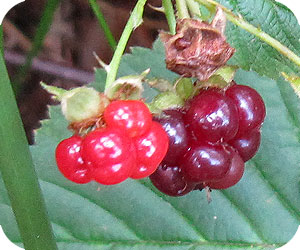 |
|
Blackberries
Nutrition
Similar to raspberries and dewberries, blackberries
are a little larger than dewberries and unlike
raspberries, they are deep purple black colored. These
berries grown on prickly upright bramble bushes and
provide many qualities including vitamin C, fibre,
potassium, phosphorus and calcium. Dewberries are
very similar to blackberries expect they grow on long
trailing branches.
Blackcurrants
Nutrition Small black
currants / berries which grow in clusters and contain
small seeds. Blackcurrant provides a good source of
vitamin C which helps to ward away colds and flu.
Blackcurrants are berries best cooked and used for making
jellies and jam.
Blueberries
Nutrition
Popular berries often referred to as a super food or
super fruit as it has outstanding health benefits and
qualities, such as promoting healthy brain function and
improving memory and concentration levels. The blueberry
is small, dark blue colored, firm on the outside.
Berries are soft inside with soft edible seeds, mild in flavor and
delicious. |
|
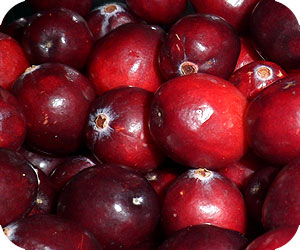 |
|
Cloudberries
Nutrition
In Canada the Cloudberries are known as
Baked Apple Berries.
The Cloudberry is similar to raspberry except it is golden yellow. Golden berries are grown in
colder climates, in countries such as Scandinavia and
Siberia. These berries ripen slowly in such
climates, therefore, their flavor intensifies during the
growing process more so than many other berry varieties
- this strong flavor makes the berries taste divine!
Cranberries
Nutrition
This type of berry is hugely popular. Cranberry is often
used in sauces or stuffing to accompany meat such as
turkey, traditionally served with Christmas dinner.
Cranberries are small, round, red, firm and sour. These
berries
are excellent cooked, dried or for making juice.
Craneberries
Nutrition
This variety of
berry originated from America. The Craneberry is a
larger, sweeter variety of cranberry and it is a very
popularly type of berry that is used at Thanksgiving
dinner. |
|
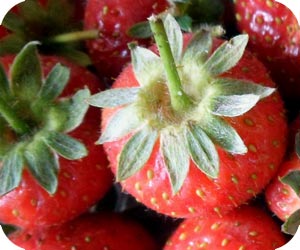 |
|
Elderberries
Nutrition
These berries type grow in clusters of small shiny
black berries which are very sweet and fragrant.
Elderberry has a high vitamin C content. These berries
are
ideal for adding flavor and color to drinks including
wine.
Goji Berries
Nutrition
This kind of
berry is also known as the Chinese wolfberry. Goji
berries are grown in Asia and Southeastern Europe. This
type of berry refers to two the fruit of two plant
species which are the Chinese Lycium Chinense and Lycium
Barbarum. The wolf berries are bright red orange colored,
they contain little yellow seeds and are 1-2 cm long.
Gooseberries
Nutrition
The Gooseberry is very different to
other types of berry as its generally larger in size,
bright green to purple in color with firm, tough skin.
The flavor and texture of Gooseberries can vary from
sour and tough to sweet and soft. Goose berries have
faint lines running down their skin. This berry provides
fibre, vitamin A, C, D, calcium, potassium, niacin and
phosphorus. The calories in Gooseberry are very low. |
|
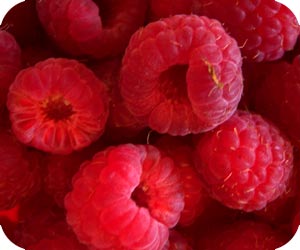 |
|
Haw Berries
Nutrition
These berries grown on
hawthorns or May trees. They are small in size, deep red
in color and they grow in clusters. Haws have a bitter,
strong taste. Theses berries are good for making sauces and
jellies.
Huckleberries The Huckleberry is small with firm
skin. They contain hard seeds inside them. Huckleberries
taste sharp and strong. Tangleberry is a similar
American variety.
Loganberries
These are hybrid berries - a cross
between a raspberry and a dewberry.
Mulberries
These are common berries used in wine,
pies, tarts and other berry recipes. Mulberry grows on
trees. There are different kinds which include white or
black Mulberries.
Redcurrants Small bright shiny
berries which grow in clusters. Suitable for eating raw.
Excellent for cake decoration as they look so
attractive. Ideal ingredient for berry desserts.
|
|
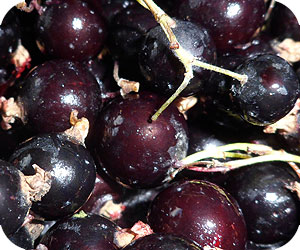 |
|
|
|
Raspberries
Nutrition
A small red berry fruit, there are also yellow raspberry
varieties available. These berries are delicious,
succulent and sweet. Ideal for healthy baking and packed
full of vitamins and nutrients which can
significantly
improve health.
Rose Hips
These are actually seed pods of roses
which may be red or orange shades of color. Rose hips
can be eaten providing the hairy seeds are removed
first. The rose hip has an extremely high content of
Vitamin C. They are ideal for making jellies and syrup.
Rowan berries
Nutrition
These are small berries which grow in
clusters. The rowanberry is bright red orange colored,
and it is eaten mainly by wild birds as Rowanberries
grow from the Mountain Ash Tree. When it comes to human
consumption, Rowans are berries which are most commonly used as an
ingredient in orange jelly.
Youngberries
Hybrid berry, deep red blackberry. Cross between
dewberry & loganberry. |
|
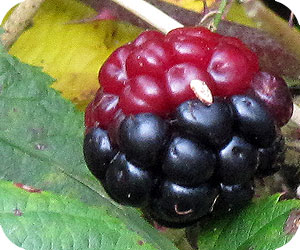 |
|
Strawberries
Nutrition
These delicious berries
are
ripe when red. The Strawberry is one of the most
commonly eaten types of berry. They range from small to
large in size. The health benefits of strawberries are
high as this fruit is crammed with vitamins and minerals
including Vitamin B and C, iron, potassium and fibre.
Strawberries are sweet and tasty, they are ideal for all
sorts of recipes including smoothies.
Tayberries
Nutrition
This is a bright red, hybrid berry
which is ideal for cooking. The Tayberry originates from
Scotland. It is a cross between the Tetraploid Raspberry
and the Aurora Blackberry.
Whitecurrants
Nutrition
This variety are small white golden
berries which grow in clusters. Whitecurrant is suitable
for eating raw. They are excellent for cake decoration
as they look lovely with a sprinkling of icing sugar.
White currants are also ideal for using in cake and tart
recipes. |
|
 |
|
|
|
|
Berries Nutrition:
Health Benefits and Facts
The information and facts about berries
provides important details, descriptions and
pictures of berries, including the most common types
of berries.
|
|
|
|
Health
experts and nutritionists believe that a well-balanced
diet that includes at least five portions of fruit and
vegetables per day will help to considerably improve our
lifestyles and ultimately extend our lives |
|
|
|
|